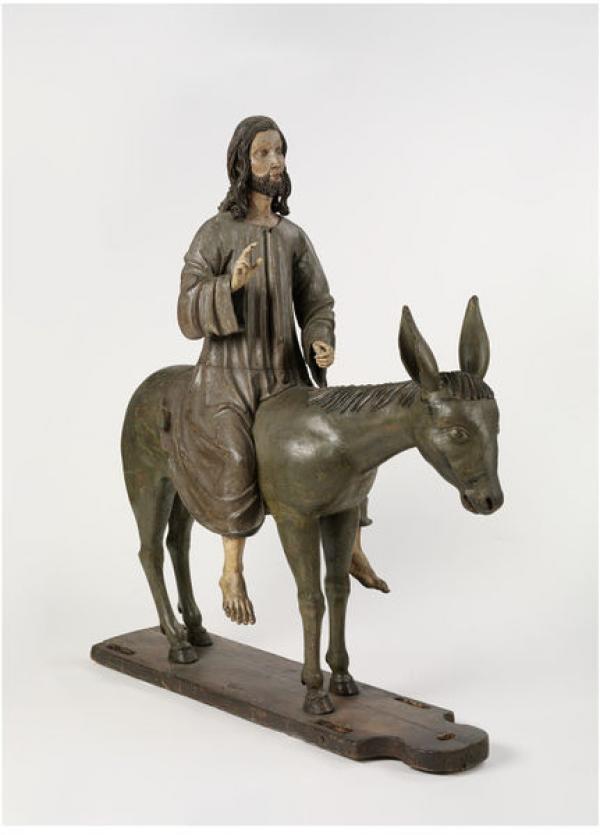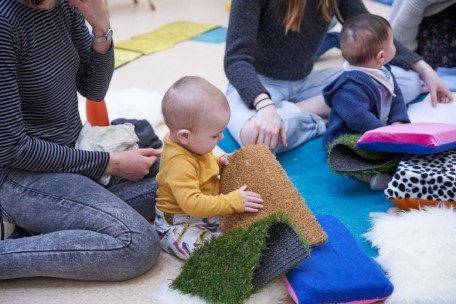This statue of the blessing Christ riding a donkey is an appropriate choice of object for Holy Week. This type of image, known as a Palmesel (literally ‘Palm Ass’), was common in German towns during the late middle ages, and was carried in processions on Palm Sunday, the Sunday before Easter, evoking Christ’s entry into Jerusalem. Our Palmesel may have been made in Ulm in southern Germany, around 1480. It is made of limewood, the preferred medium for large scale wood sculpture in Germany, painted naturalistically in flesh tones and shades of grey, and although there is a small amount of gilding on the hem of Christ’s robe, the simplicity of the materials and treatment reflect its function as a non-elite image.

Christ on a Donkey, c.1480, Limewood and pine, painted and gilded. Medieval and Renaissance, room 10, case 11, Mus Ref: A.1030-1910 © Victoria and Albert Museum, London
Christ’s upper body is made from one piece of wood, his lower body and that of the ass from another. His hands and feet, the donkey’s legs, ears and tail are made separately and dowelled into place. The base, made from pine, is of later date but presumably replaced the original; it has four holes cut into it for wheels, and a hole at the front for towing. Christ would originally have held reins in his left hand, made of leather, and the donkey would have had a bridle, enhancing the naturalistic effect.
The popularity of Palmesel sculptures is evident from the number that still survive, and it is easy to see how this type of image played tolate medieval popular piety,which encouraged co-participation in the religious event. Indeedwithin a few decades, these ‘empathetic’ images became the subject of anti-Catholic criticism by German Protestant reformers. The piece of invective by one such reformer, quoted below, gives a vivid idea of how our Palmesel would have functioned.
‘Palm Sunday comes … A wooden ass on a trolley is pulled around the town with the image of their God on it; they sing, throw palms before it, and do much idolatry with this wooden God of theirs. The parish priest prostrates himself before this image … The children sing and point their fingers … Two Bacchantes prostrate themselves before it with outlandish ceremony and song, and then everyone throws palms at it.’
[Cited in Michael Baxandall, The Limewood Sculptors of Renaissance Germany, London Yale University Press, 1981, p.58]



Comments